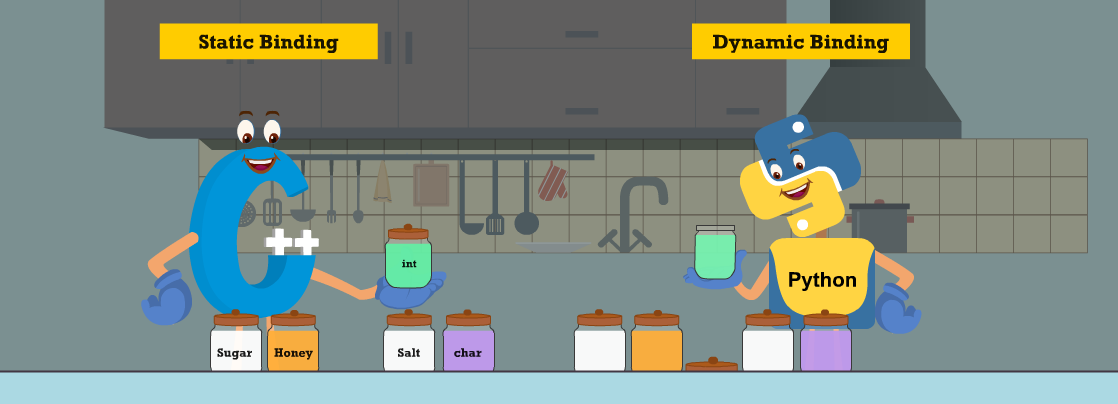
Understanding Dynamic Typing in Python
Python is one of the most popular programming languages today. One of the key features that make Python so powerful is dynamic typing. What does dynamic typing mean? Let's explore this concept in detail.
What is Dynamic Typing?
All programming languages use variables, which are named storage locations or containers in memory which can store data like integers, characters, floats, etc.
You might have used data types when creating variables in C and C++.
Example
int rollnumber;
char name[20];
Here, rollnumber is the variable that holds a value of an integer data type.
But in Python, there is no need to specify the data type when creating a variable. In Python, a variable is referred to as a label and not a container as it does not store values like containers, rather it acts as a reference to the object in memory.
Python’s dynamic typing is like a versatile kitchen where containers are not assigned to ingredients in advance. Rather than permanently labelling a jar as “sugar”, you can put honey or salt in it as and when required. In Python, you need not declare a variable’s data type in advance. The interpreter determines the type at runtime, much like identifying the ingredient when you open the container. This flexibility allows you to redefine a variable with different types, such as switching from an integer to a string, without concern.
Example
x = 10 # x is an integer
print("x value:",x)
x = "Hello" # Now x is a string
print("x value:",x)
x = 3.14 # Now x is a float
print("x value:",x)
Output
x value: 10
x value: Hello
x value: 3.14
In the above example, variable x is pointing to an integer value 10 and later to “Hello” which is a string datatype. When we run the code it does not raise an error rather x shifts its reference from 10( integer datatype) to “Hello” (string data type). Thus, the variable changes its type as different values are assigned to it. This is a direct result of Python’s dynamic typing.
Advantages of Dynamic Typing
- Ease to code: Since variable types don’t need to be declared, writing Python code is quicker and easier.
- Flexibility: You can change a variable’s type during execution.
Disadvantages of Dynamic Typing
- Runtime Errors: Since type checking happens at runtime, type-related bugs might only appear when the program is executed.
- Ambiguity in code: Large projects may become harder to manage due to the lack of explicit type definitions.
How to handle Dynamic Typing Issues
- Naming Conventions: Choose meaningful variable names to indicate their expected types.
- Use Assertions: Use assert statements to enforce type constraints where necessary.
Conclusion
Python's dynamic typing is powerful when used wisely, but potentially problematic if mismanaged. Understanding its strengths and weaknesses can help you write better, more maintainable Python code.







